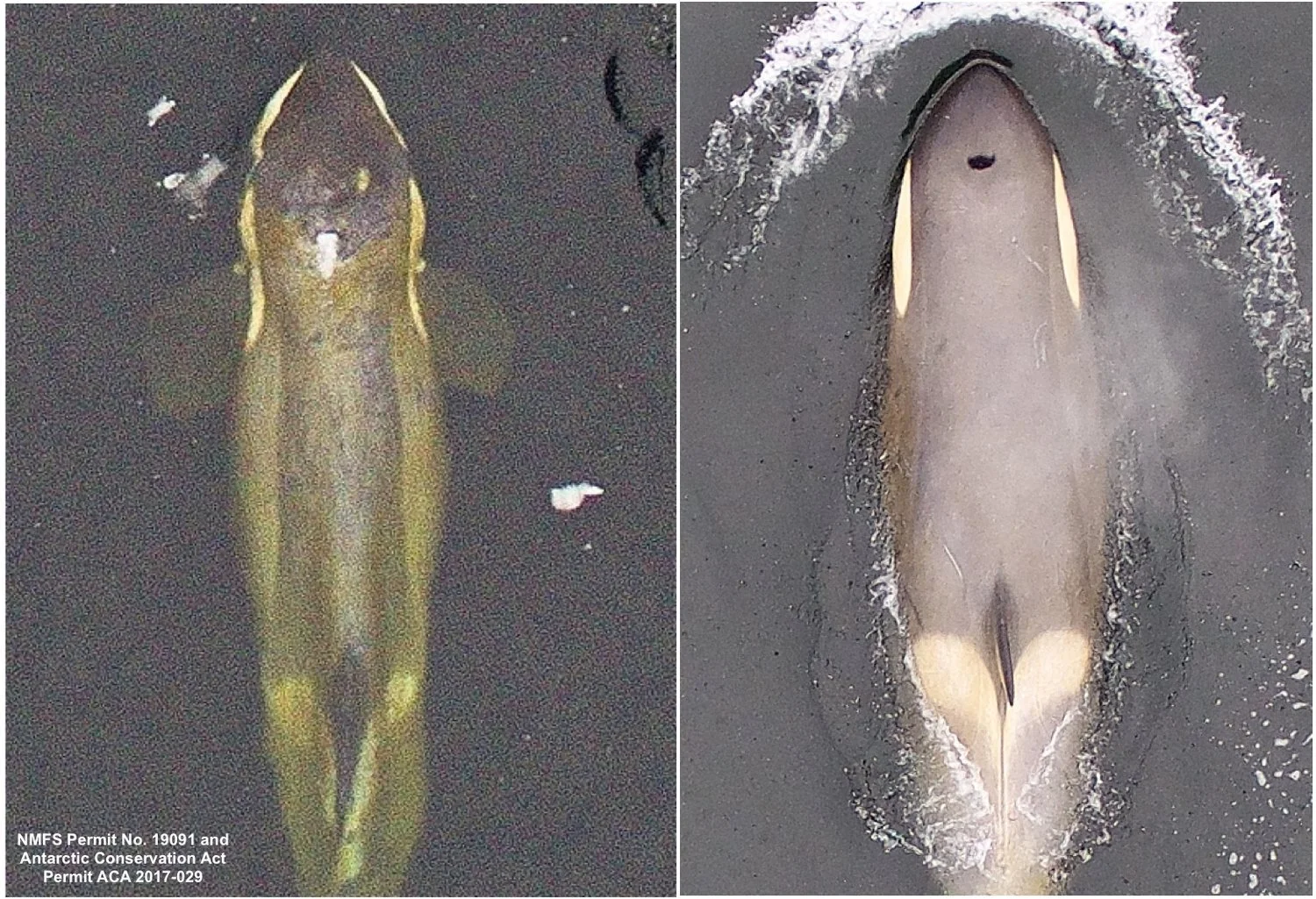Dr. Fearnbach is Back in the Ice!
Back in the ice again! Day one in the rapidly changing ecosystem of the Antarctic Peninsula brought an exciting encounter with a group of Type B1 killer whales (seal predators) that were in robust body condition. This was a welcome contrast to an alarmingly thin group photographed last year (see image). These “pack ice killer whales” are perhaps the hardest to find in the world due to their inaccessible habitat that is often deep in the ice. Dr. Holly Fearnbach, SR3’s Marine Mammal Research Director, and her colleagues John Durban (NOAA) and Leigh Hickmott (Open Ocean Consulting) are focusing their research on understanding the health of top predators (killer whales) and top consumers (humpback and minke whales). The team uses an unmanned hexacopter to collect high-resolution images that are analyzed to estimate size and assess body condition of individual whales. They will be onboard Lindblad Expedition’s National Geographic Explorer for another 3 weeks - stay tuned for more updates!
These ongoing research efforts are supported by the Lindblad Expeditions-National Geographic Fund (LEX-NG), NOAA Southwest Fisheries Science Center and SR3
Aerial photographs of two Type B1 killer whales in the coastal waters of the Antarctic Peninsula. The photo on the left (taken in Feb 2017) shows an extremely emaciated adult female compared to the photo on the right (taken in Jan 2018) that shows a different adult female in robust condition. Note that the eye patches on the head of the emaciated whale (left) follow the shape of the skull due to fat loss behind the head. These images were collected from >30m (100ft) above the whales using a small unmanned hexacopter. Research conducted under NMFS Permit No. 19091 and Antarctic Conservation Act Permit ACA 2017-029.

